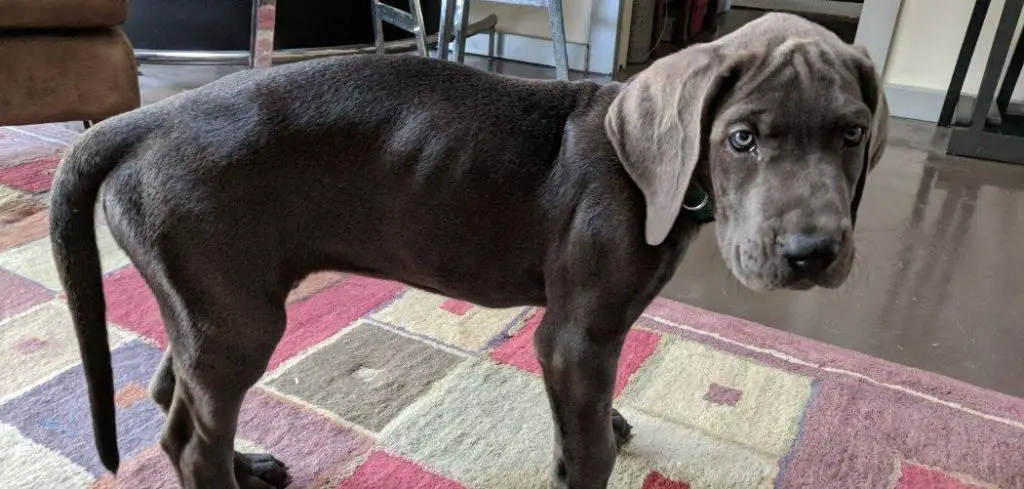It can be alarming to watch your dog pacing back and forth while panting heavily. These behaviors often indicate that your dog is feeling uncomfortable, anxious, or even unwell.
We outline the common causes of excessive panting and pacing in dogs, what you can do at home, and when to seek veterinary help.
Dog Excessively Panting and Pacing — Why It Happens
When dogs pant excessively and pace around, it usually signals discomfort, stress, or an underlying medical issue. It could stem from anxiety, overheating, pain, or more serious conditions like heart problems or respiratory distress.
Some dogs may pace and pant when they’re scared of loud noises or when something is physically wrong. In older dogs, cognitive decline may also be to blame.

Common Causes of Dog Excessively Panting and Pacing
Anxiety or Stress
Anxiety is one of the most common reasons for panting and pacing. Dogs experiencing separation anxiety, fear from fireworks or thunderstorms, or changes in their environment may show these signs.
Panting is a physical response to stress, and pacing can reflect restlessness and the inability to relax.
You might notice your dog trembling, hiding, whining, or showing other signs of unease.
While not always dangerous, chronic anxiety can impact your dog’s overall health and happiness.
Read more: Dog Breathing Heavy and Drooling (Here’s why)
Pain or Discomfort
Pain can make your dog restless and lead to excessive panting. Whether due to arthritis, an injury, gastrointestinal discomfort, or internal illness, pain is a major trigger for both behaviors.
Because dogs often hide pain, panting and pacing may be among the first signs something is wrong.
Other signs to watch for include whining, avoiding touch, limping, or a hunched posture.
Heatstroke or Overheating
Excessive panting is a hallmark of heatstroke or overheating, especially in warm weather or after vigorous activity.
When the body temperature rises too high, dogs will pant heavily to try to cool down. Pacing might reflect distress or confusion as the heat affects them neurologically.
This condition is life-threatening and can develop rapidly, especially in brachycephalic breeds, puppies, or older dogs.
Cognitive Dysfunction Syndrome (CDS)
In older dogs, cognitive dysfunction—similar to dementia in humans—can cause confusion, nighttime restlessness, pacing, and panting.
Dogs with CDS may become disoriented, anxious, and show behavior changes such as barking at nothing or forgetting routines.
These dogs often seem restless in the evening (a symptom known as sundowning) and may appear distressed without a clear cause.
Read more: Dog Panting Excessively (Here’s why)
Heart Disease
Heart problems can lead to poor oxygen circulation, which causes dogs to pant excessively as they try to breathe more effectively.
Pacing may occur as the dog becomes uncomfortable lying down or feels distressed by shortness of breath.
You might also notice coughing, fatigue, or a distended abdomen. These signs require urgent veterinary care.
Respiratory Disorders
Conditions like laryngeal paralysis, tracheal collapse, or bronchitis can all cause panting and agitation due to difficulty breathing.
Dogs may pace because they’re struggling to find a comfortable way to get air or because they feel panicked.
You might also hear wheezing, choking sounds, or see blue-tinged gums in severe cases.
What to Do If Your Dog Is Excessively Panting and Pacing
First, ensure your dog is in a cool, calm environment. If you suspect heatstroke, move them to shade or air conditioning and offer water.
Avoid physical activity and try to reassure your dog using a calm voice and gentle touch if they’re anxious.
Observe for other symptoms like vomiting, diarrhea, trembling, or labored breathing. These can help you and your vet pinpoint the cause.
Limit any new stressors in the home—like loud noises, new pets, or visitors—and maintain a consistent routine.
If your dog is a senior, consider if this could be cognitive decline and track patterns of behavior for your vet.
When to Call or Visit Your Vet
You should contact your vet if panting and pacing are new, persistent, or accompanied by other worrisome signs.
Seek immediate care if:
Your dog’s gums are pale or blue.
Breathing seems labored or noisy.
There is vomiting, diarrhea, or collapse.
Your dog is overheating and not cooling down.
Also reach out if your dog seems confused, disoriented, or in pain—even if no other symptoms are visible. Persistent anxiety should also be addressed to improve your dog’s quality of life.
Read more: Dog Panting and Vomiting (When is it an emergency?)
Key Takeaway
Panting and pacing may seem harmless at first, but they often point to discomfort, stress, or deeper health concerns.
By monitoring your dog closely, keeping them cool and calm, and knowing when to seek veterinary help, you can protect their well-being.
Always trust your instincts—if something feels off with your dog, it’s worth checking in with a professional.
